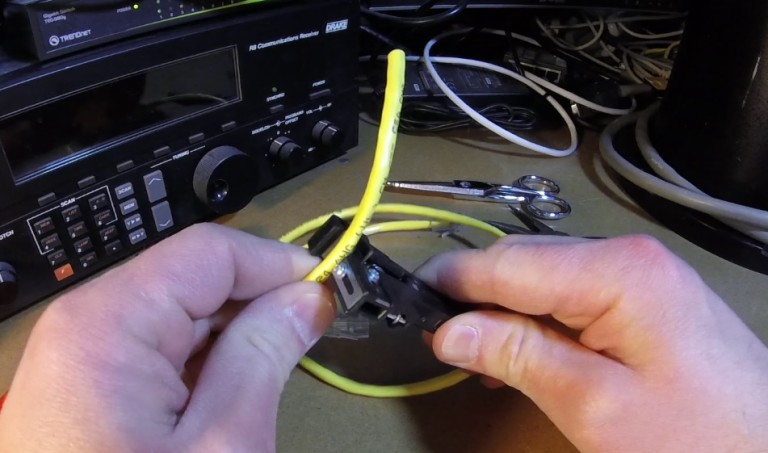

#RS 232 LOOPBACK SERIAL#
You need to insert one end of the cable into your serial port and use the other free end to make the loopback connection. The DB-9 connector is a 9-pin connector, as shown below. You can also use a simple paper clip to short the two connections by inserting the clip into each hole in the female connector, as shown below: The figure below shows the female DB-9 connector with pin# 2 and pin# 3 shorted. RS-232 DB-9 Connector The DB-9 connector is a 9-pin connector, as shown below.
#RS 232 LOOPBACK WINDOWS#
RS-232 DB-9 Connector RS-485 DB-9 Connector RS-232 DB-25 Connector RS-485 RJ-45 Connector Serial Cables Performing a Loopback Test with Windows HyperTerminal Follow the steps below to modify the appropriate cable. If you do not have a null-modem cable, or if you do not know which serial cable to purchase for your serial card, see the Serial Cables section below. To perform this test, you need to modify your null-modem serial cable temporarily so that the transmit and receive pins are connected.
#RS 232 LOOPBACK HOW TO#
How to Do a Serial Loopback Test Overview A loopback test allows you to send and receive data from the same serial port to verify that the port is operational. Login or Create a user profile.ĭocument Type: Tutorial NI Supported: Yes Publish Date: Feb 18, 2008 Case comEvEOF ' An EOF character was found in the ' input stream.How to Do a Serial Loopback Test- Developer Zone - National Instruments

Newdata = Newdata + theChar ' received a character - append it to NewDataĬase comEvSend ' There are SThreshold number of ' characters in the transmit buffer. Newdata = " " ' clear NewData so it can assemble the next packetĭata.SelLength = 0 ElseIf Asc(theChar) 10 Then ' ignore linefeeds OutputDisplay.SelLength = 0 End If ' If Asc(theInfo) = 73 Then 'Look for (I) OutputDisplay.SelText = Newdata + vbCr + vbLf ' include a CR and LF to separate from next line placed in OutputDisplay OutputDisplay.SelStart = Len(OutputDisplay.Text) InformationDisplay.SelLength = 0 ElseIf theInfo = " P" Then InformationDisplay.SelText = Newdata + vbCr + vbLf ' include a CR and LF to separate from next line placed in OutputDisplay

InformationDisplay.SelStart = Len(InformationDisplay.Text) TheInfo = Mid$(Newdata, 2, 1) ' Loads the third letter in the String "Newdata" in "theInfo" is a (I) or (P) If theInfo = " I" Then TheChar = Mid$(InBuff, I, 1) ' extract the next character If Asc(theChar) = 13 Then ' Look for CR InBuff = MSComm1.Input ' received 1 or more characters For I = 1 To Len(InBuff) ' examine each received character in sequence Case comEvReceive ' Received RThreshold # of chars. Case comEvRing ' Change in the Ring Indicator. Case comEventDCB ' Unexpected error retrieving DCB] ' Events Case comEvCD ' Change in the CD line. Case comEventTxFull ' Transmit buffer full. Case comEventRxOver ' Receive buffer overflow. ' Errors Case comEventBreak ' A Break was received. MSComm1.PortOpen = False End Sub Private Sub MSComm1_OnComm()ĭim InBuff As String Dim I As Integer ' used to inspect each incoming character Dim theChar As String ' each received character Dim theInfo As String Select Case MSComm1.CommEvent Newdata = " " ' initialize to empty End Sub Private Sub Form_Unload(Cancel As Integer) Text20.Text = Text21.Text & " " End Sub Private Sub Form_Load()
#RS 232 LOOPBACK CODE#
Copy Code Option Explicit Dim Newdata As String ' each imcoming packet is assembled here Private Sub Command35_Click()


 0 kommentar(er)
0 kommentar(er)
